Ceramic coating is the way to go if you want to protect your wheels and give them a long-lasting shine. This comprehensive Guide to Applying Ceramic Coating on Wheels will walk you through the step-by-step process of applying ceramic coating on your wheels for the best results.
Table of Contents
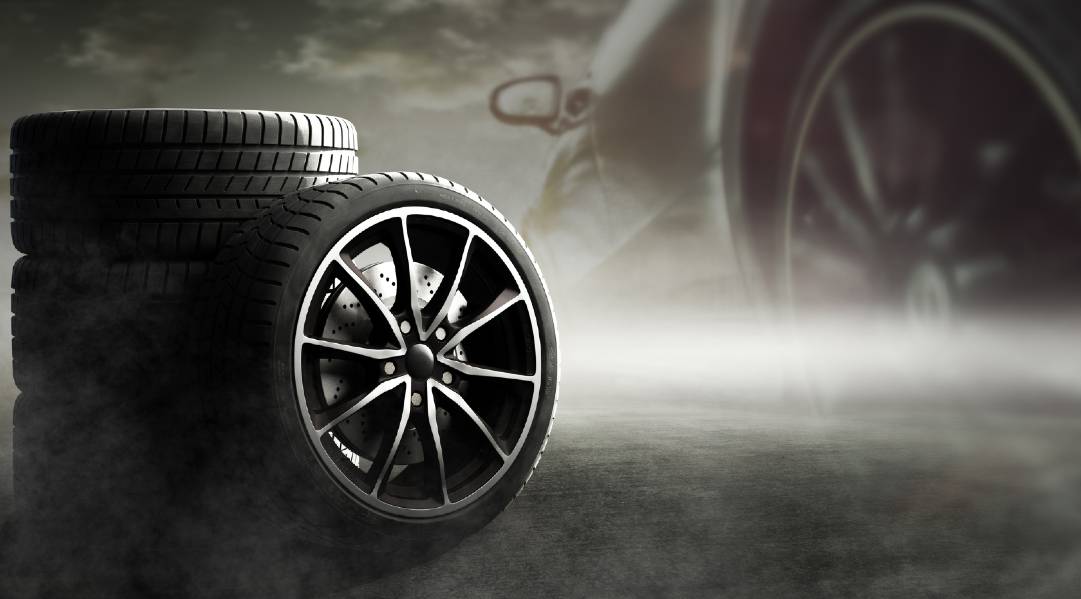
What is Ceramic Wheel Coating?
Ceramic coating for wheels is becoming increasingly popular in the automotive industry to protect and enhance the appearance of wheels. This advanced coating provides a strong layer of protection against dirt, brake dust, road grime, and other contaminants while adding a glossy and hydrophobic finish to the wheels.
Ceramic coatings are made of nano-ceramic particles that bond to the surface of the wheels, creating a long-lasting barrier that is resistant to heat, chemicals, and UV rays. This durable and low-maintenance coating helps maintain the wheels’ appearance, making cleaning easier and reducing the need for frequent maintenance.
Ceramic wheel coating is a highly effective and efficient way to keep wheels looking great and protected from the elements.
Benefits of Applying Ceramic Coating on Wheels
Applying a ceramic coating on wheels offers a range of benefits that can enhance both the appearance and functionality of the wheels.
One of the major benefits is its glossy appearance, giving the wheels a sleek and attractive glossy finish. In addition to the aesthetic appeal, ceramic coatings have hydrophobic properties, repelling water and preventing water spots, making it easier to keep the wheels looking clean and shiny.
The hydrophobic nature of ceramic coatings also makes it easier to clean the wheels, as dirt and debris are less likely to cling to the surface. This saves time and effort for maintenance and maintains the wheels’ pristine appearance for longer periods.
This provides protection from dirt, road grime, and other environmental contaminants, helping to preserve the vehicle wheels in the long run. It can enhance the wheels’ features, such as color, shine, and overall performance.
Applying this coating on wheels can significantly improve their appearance, make cleaning and maintenance easier, and provide protection from the elements, ultimately extending the life and quality of the wheels.
Preparing the Wheels for Application
Before applying a ceramic coating, it’s crucial to properly prepare the wheels to ensure the coating adheres effectively and provides long-lasting protection.
Preparing the wheels:
- Thoroughly clean them with a specialized wheel cleaner to remove dirt, grime, and brake dust buildup.
- Use a clay bar to safely remove any embedded contaminants from the surface of the wheels, ensuring a smooth and clean surface for the ceramic coating to adhere to.
- After cleaning and decontaminating the wheels, it’s important to inspect them for any imperfections such as scratches, swirl marks, or oxidation and address these issues as needed before applying the ceramic coating.
- Once the wheels are clean and free of imperfections, it’s recommended to use an alcohol-based cleaner to remove any remaining residue and oils from the surface, promoting optimal adhesion of the ceramic coating.
- Ensure the wheels are completely dry before applying the ceramic coating to avoid water spots and ensure a flawless finish.
Using these steps to prepare the wheels for ceramic coating properly, you can maximize the effectiveness and longevity, providing durable protection and a stunning look for your wheels.
Cleaning the Wheels with Microfiber Towels and Mild Soap
To clean the wheels, gently scrub them with a mild soap and a microfiber towel. Make sure to cover all surfaces thoroughly to remove any dirt and grime. Using a pH-neutral soap is essential to avoid damaging the wheels.
After scrubbing, rinse the entire wheels with a garden hose to remove any remaining soap and dirt. Once rinsed, dry the clean wheels off with a clean microfiber towel to prevent water spots or streaks.
It’s also important to use the two-bucket method while cleaning the wheels. This method involves rinsing the towels using one bucket with soapy water and another with clean water.
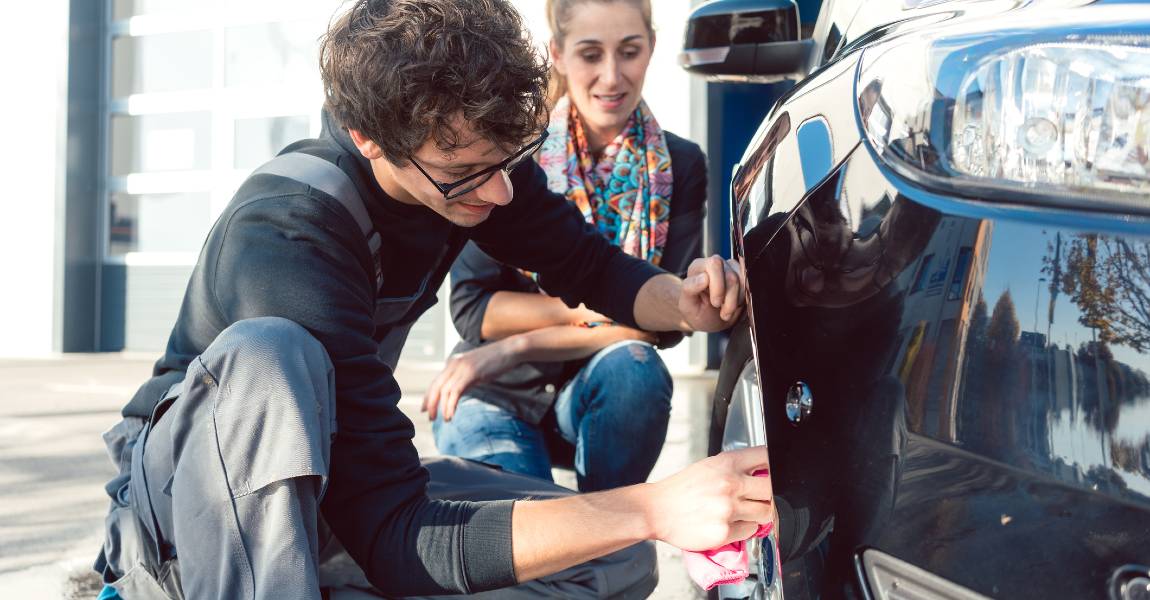
Removing Existing Protective Layers
Before applying a new ceramic coating to your car’s surfaces, removing any existing protective layers is crucial.
Start by thoroughly cleaning the surfaces with a clay bar treatment to lift and eliminate any residual waxes, sealants, or other coatings. This step will create a clean and smooth surface for the new ceramic coating to bond effectively.
After the clay bar treatment, use a mild polish or compound to gently remove any remaining residue and ensure the surface is completely contaminant-free. This will help to enhance the adhesion of the new ceramic coating and optimize its performance.
Apply the new ceramic coating once the surfaces are clean and free of any existing protective layers. Ensure the surface is completely dry before applying the ceramic coating to promote proper adhesion and a flawless glossy finish.
Following these steps for surface preparation and removing existing protective layers, you can ensure that it will bond effectively and provide long-lasting protection for your car’s surfaces.
Ensuring the Paint Job is in Good Condition
Regular maintenance and paint protection are crucial for ensuring the longevity and appearance of your car’s paint job.
Environmental contaminants such as UV rays, acid rain, road salt, road tar, bird droppings, tree sap, and dust particles can all cause damage to the paint over time. UV rays can cause the paint to fade and oxidize, while acid rain and bird droppings can eat away at the clear coat. Dust particles can also scratch the paint, leading to a dull and aged appearance.
Regularly washing and waxing your car can remove these contaminants and provide a layer of protection for the paint.
For maximum protection, consider investing in a ceramic coating. Ceramic coatings provide a strong, durable layer of protection that can resist UV rays, acid rain, and environmental contaminants. This not only helps to maintain the car’s appearance but also ensures the structural integrity of the paint.
Proper maintenance and paint protection are essential for keeping your car’s paint job in good condition.
By protecting against environmental contaminants and providing long-term protection, you can ensure that your car looks great and maintains its value over time.
Utilizing Clay Bars to Remove Contaminants and Minor Scratches
Utilizing clay bars to remove contaminants and minor scratches is essential in preparing a car’s surface for ceramic coating application.
- Gather the necessary equipment: lubricant, detailing clay bars, clean microfiber cloth, and a bucket with warm, soapy water.
- Start washing the car thoroughly to remove any surface dirt or debris.
- Spray the lubricant onto a small section of the car and rub the detailing clay bar back and forth gently across the surface. The clay bar will pick up contaminants like road grime, tar, or tree sap, making the wheel surface clean.
- Use the microfiber towel to remove any excess residue, and repeat this process for the entire car.
- Carefully work the clay bar over the affected area for minor scratches, using the lubricant to ensure smooth gliding. The clay bar will help to minimize the appearance of minor imperfections, creating a smooth and optimal surface for the ceramic coating application.
When utilizing clay bars to remove contaminants and minor scratches, you’ll ensure that the car’s surface is in prime condition, allowing for a long-lasting and durable finish.
How to Properly Dry the Wheels After Cleaning
After cleaning the wheels, it’s important to properly dry them to ensure a clean and shiny finish without damaging the ceramic coating.
1. After scrubbing and rinsing the wheels, use a plush microfiber drying towel to dry them off thoroughly. The plush microfiber towel is gentle on the ceramic coating and will help to absorb water effectively.
2. Be sure to carefully remove any water spots to ensure a clean and shiny appearance. Water spots can be removed by gently wiping the wheels with a clean microfiber towel or using a specialized water spot remover.
3. Avoid using harsh chemicals, harsh scrubbers, or abrasive materials to dry the wheels, as these can damage the ceramic rim coating.
4. Extreme temperatures, such as hot sun or cold weather, can affect the drying process and potentially damage the ceramic. Try to dry the wheels in a shaded area or use a cooling drying aid to prevent any potential damage from extreme temperatures.
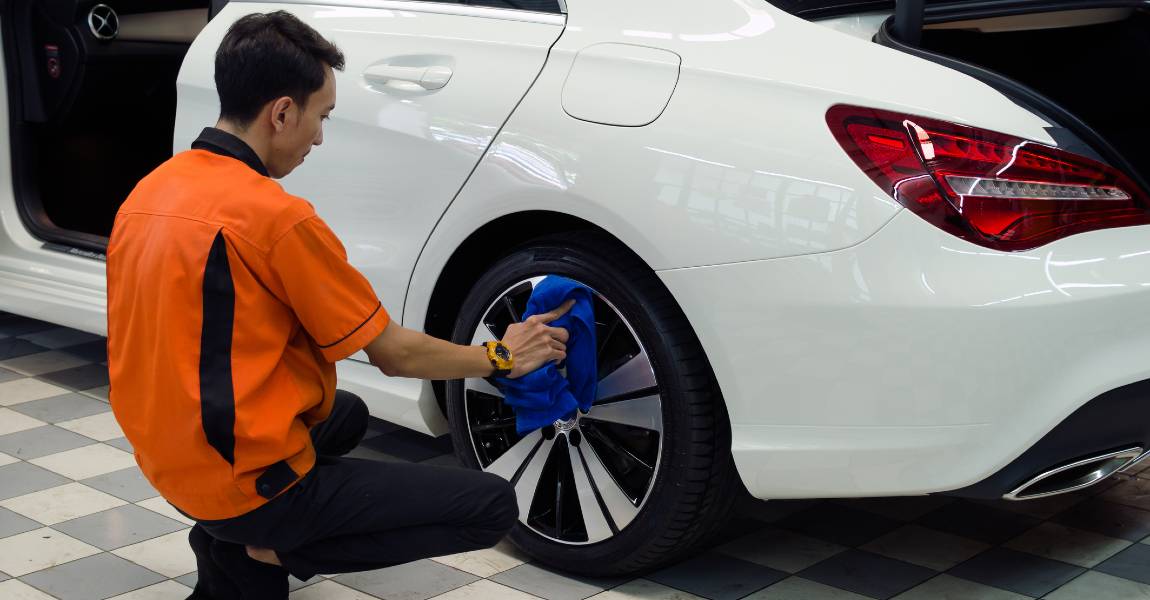
Choosing the Right Type of Ceramic Coating Products
When it comes to protecting your vehicle’s paint and maintaining its shine, choosing the right type of ceramic coating product is crucial. With various options available on the market, it’s important to consider factors such as durability, ease of application, and level of protection.
Whether you’re looking for a professional-grade coating for long-lasting results or a DIY-friendly option for at-home use, various ceramic coating products suit your specific needs.
We will explore the different types of ceramic coatings available and the key factors to consider when making your selection.
Whether you’re a car enthusiast looking to elevate your detailing game or a casual car owner wanting to protect your investment, understanding the options for ceramic coating products will help you make an informed decision for the optimal care of your vehicle.
Types of Ceramic Coating Products Available on the Market
There are several types of ceramic coating products available on the market. Spray-on ceramic coatings are popular for their ease of application, making them a great choice for DIY enthusiasts. These products provide excellent paint protection and are often formulated with a liquid polymer for added durability.
- Professional-grade are known for their high quality and long-lasting finish. Trained professionals typically apply these products and offer superior protection against environmental damage and UV rays.
- DIY ceramic coating kits are another option for consumers looking for an affordable and convenient way to protect their vehicles. These kits often include everything needed for application and are designed for easy use at home. They provide a durable and long-lasting finish, making them a popular choice for car enthusiasts.
Regardless of the type of quality product you choose, they all offer unique features and benefits. These include superior durability, enhanced paint protection, and a sleek appearance.
Whether you opt for a spray-on, a professional-grade product, or a DIY kit, you can trust that it will leave your car looking great and well-protected.
Selecting Quality Products for Long-Term Protection
When selecting ceramic products for additional protection, it is crucial to consider several key factors.
- Viscosity levels play a critical role in ensuring the even application and its ability to adhere to the smooth surface properly. This factor ultimately affects the effectiveness and durability of the protection provided.
- Film thickness is another important consideration, as a thicker layer typically provide stronger and longer-lasting protection against damage from environmental elements.
- Chemical resistance protects the coated surface against harsh substances and prevent corrosion or deterioration over time.
- Scratch and mar protection are essential for maintaining the aesthetic appearance of the surface and preventing potential structural damage.
- UV filter performance is crucial for safeguarding the coated exterior surface against harmful UV rays, which can cause fading or degradation.
Each of these factors is important for ensuring the quality and durability and its ability to provide long-term protection for the coated surface.
Applying a Ceramic Coating to the Wheels
When it comes to wheels, applying a ceramic coating can help protect against brake dust, road grime, and other contaminants, making the wheels easier to clean and maintain.
Preparing the Surface for Application with Liquid Polymer
Before applying the liquid polymer ceramic coating to the wheels, it is crucial to ensure that the surface is properly prepared. This involves starting with a clean slate by removing all contamination from the wheels.
To eliminate any surface dirt or grime, begin with a gentle cleaning method, such as a water rinse and premium car wash soap. If more aggressive means are necessary, gradually progress to a stronger cleaning method.
After cleaning the wheels, inspect them for any remaining bonded brake dust or tar.
Use a gentle wheel cleanser or brake dust remover to effectively remove these contaminants before beginning the coating process.
Proper surface preparation is essential to ensure maximum adhesion.
You can effectively prepare the surface for application, resulting in beautifully coated wheels that will be easier to maintain with proper care. This process will ultimately prolong the life and appearance of your wheel ceramic layer.
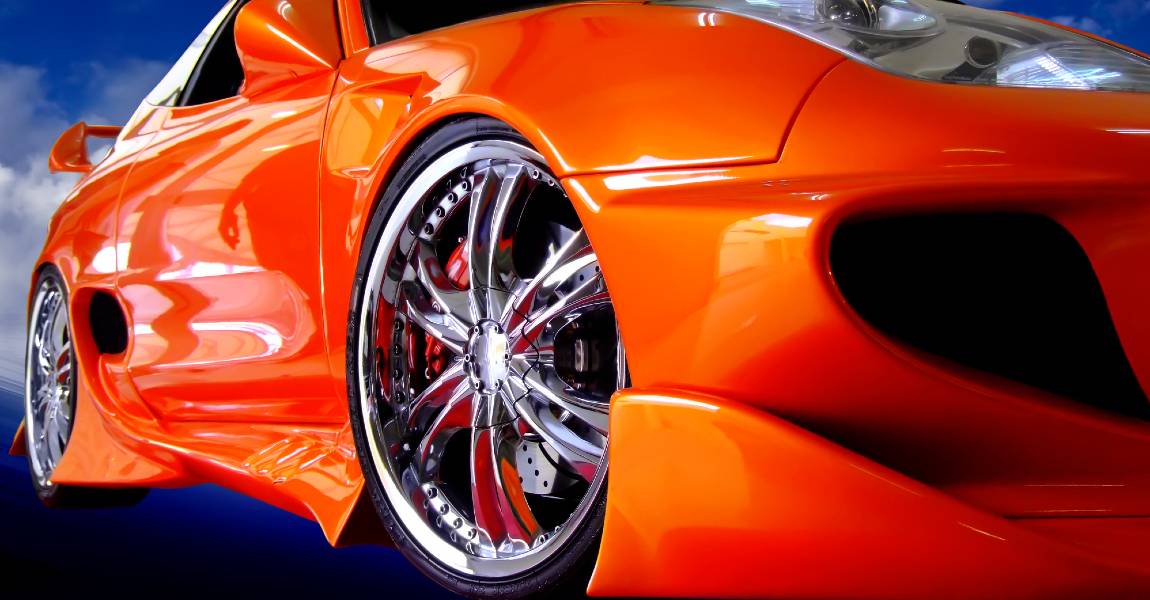
Applying Ceramic Coating Evenly to Wheel Surfaces
To apply ceramic coating evenly to wheel surfaces, thoroughly clean the wheels to ensure they are free of dirt, grime, or debris.
Once the wheels are clean and dry, use a microfiber or suede applicator to apply the ceramic in a criss-cross pattern, ensuring even coverage on the entire wheel surface.
Allow it to dry for the recommended time, then use a clean microfiber towel to remove any excess and buff the surface to a high shine.
Repeat this process on all wheel sections, ensuring even and thorough coverage.
Once it has been applied to the entire wheel, allow it to dry for 24 hours.
After the 24-hour drying period, use isopropyl alcohol to remove any residue and ensure a clean and smooth finish.
This final step will help remove any leftover residue and ensure excellent protection for the wheels.
Using a criss-cross pattern during application, the wheels will be evenly coated, providing long-lasting durability and a sleek finish.
In Summary
A Comprehensive Guide to Applying Ceramic Coating on Wheels is a valuable resource for anyone looking to protect and enhance the appearance of their vehicle’s wheels.
This guide provides step-by-step instructions on how to properly apply a ceramic coating properly, ensuring long-lasting durability and a high-gloss finish.
By following this guide, car enthusiasts can achieve professional-level results and enjoy the benefits of enhanced wheel protection. Don’t miss this opportunity to elevate your car’s aesthetics and maintenance routine.
Revitalize and protect your wheels with our premium ceramic coating. Say goodbye to scratches, dust, and brake dust buildup!
Click here to schedule your ceramic coating appointment today and give your wheels the ultimate shine and durability they deserve!





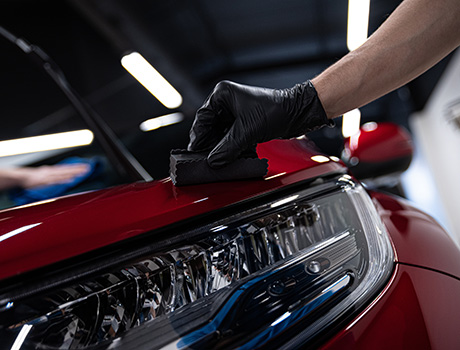
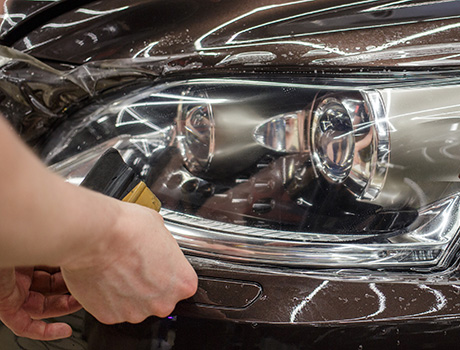

WHAT OUR CLIENTS ARE SAYING